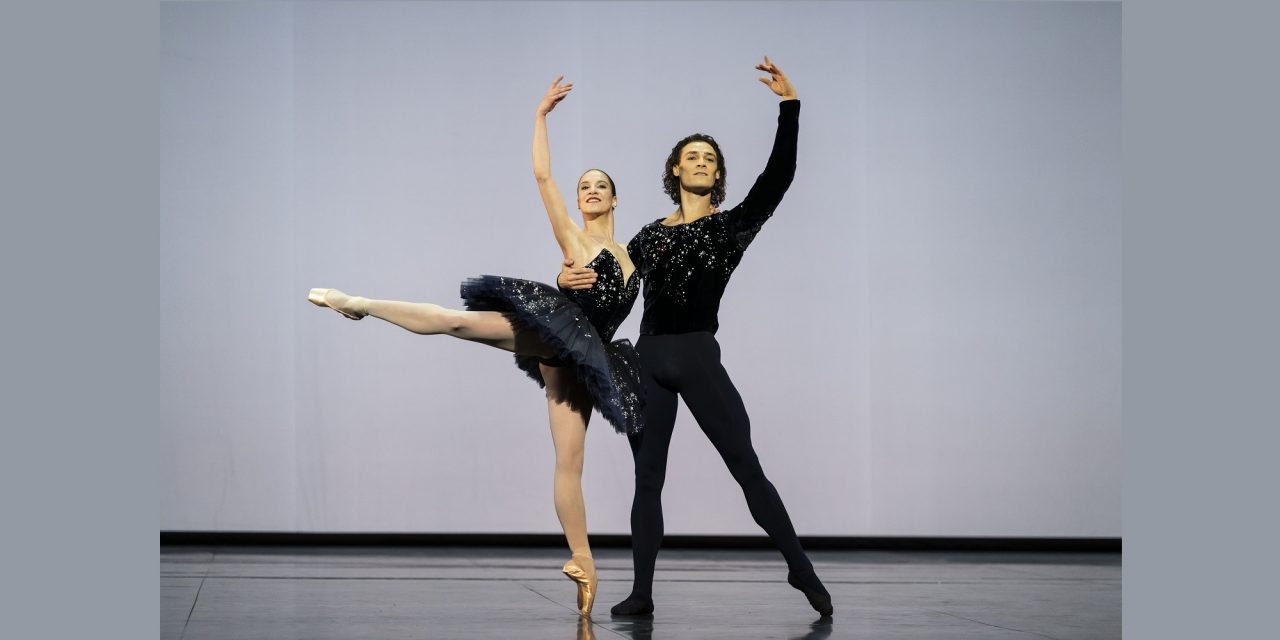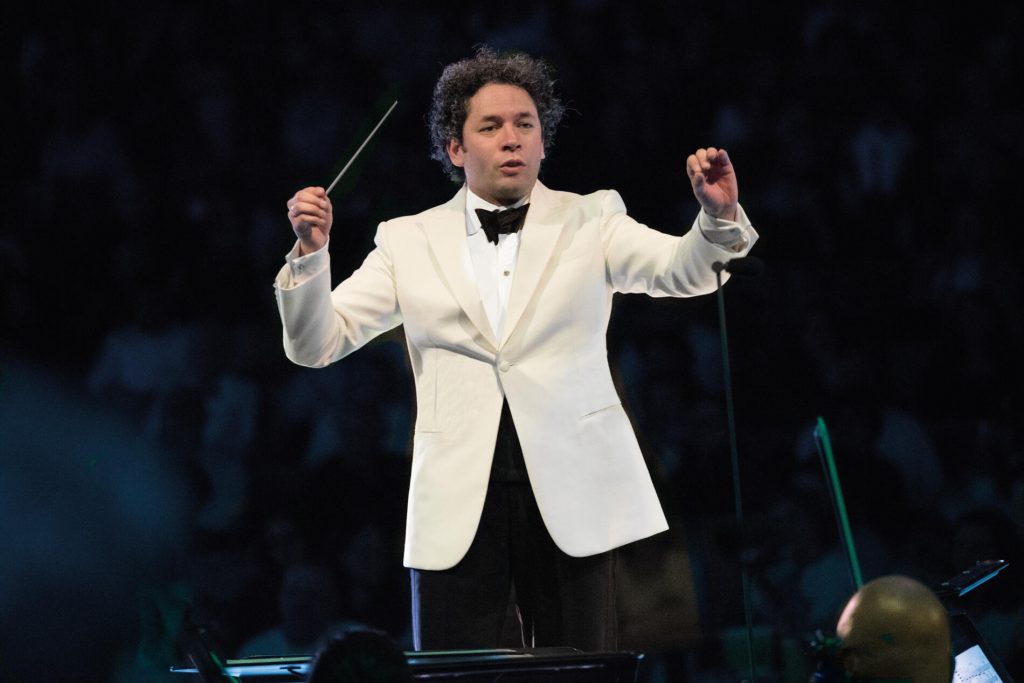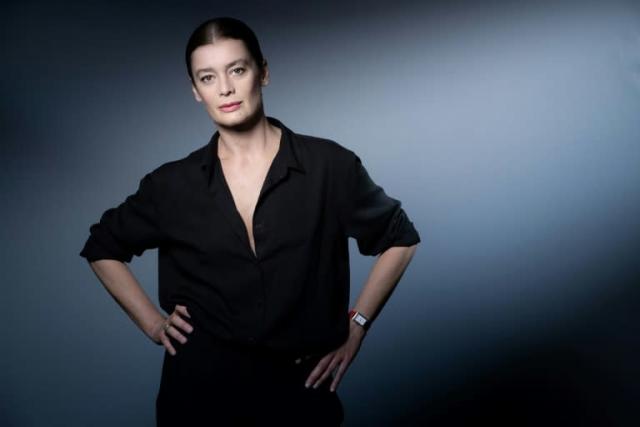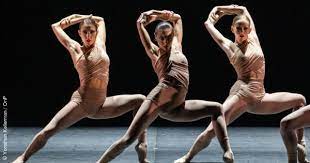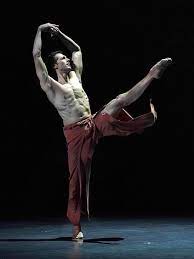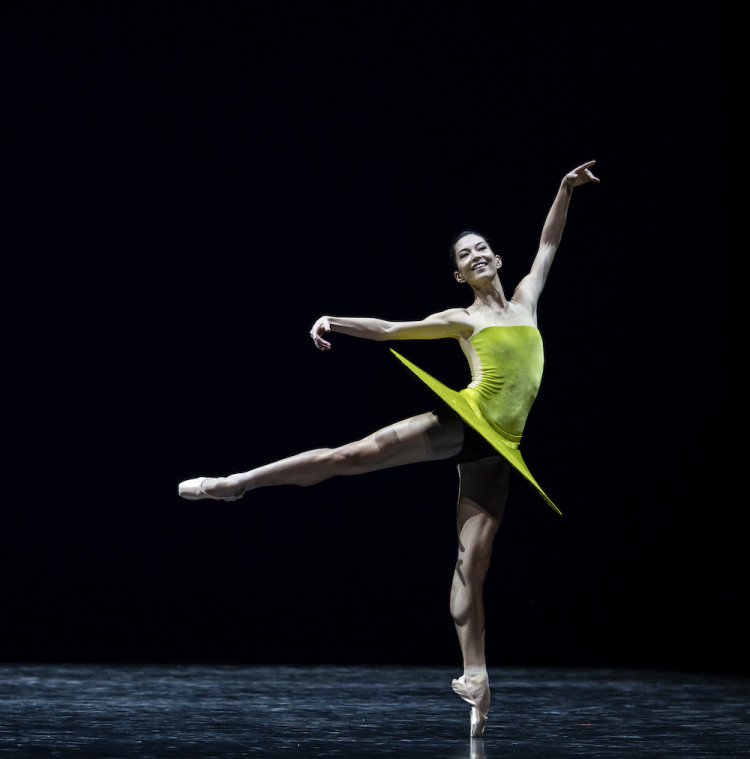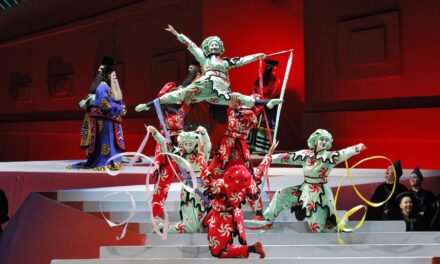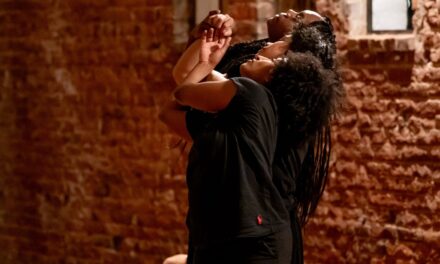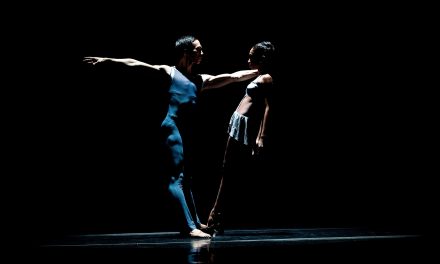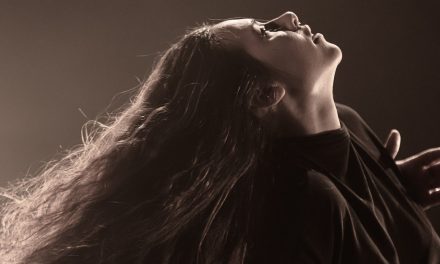A 400-year old ballet company celebrates the Hollywood Bowl’s first hundred years when the Paris Opera Ballet dances with the LA Phil conducted by Gustavo Dudamel for two nights this week.
In 2021, Dudamel added music director of the Paris Opera Orchestra to his ongoing LA Phil duties. After he conducted at the Paris Opera Ballet’s annual gala, the Dude invited the company director Aurélie Dupont to bring the company to perform during the Hollywood Bowl’s centennial season.
Renae Williams Niles was one of the LA Phil team who traveled to Paris for Dudamel’s 2021 opening and then worked to bring the company here.
“Gustavo loves ballet. He relishes finding ways to elevate and provide experiences with live music and dance, especially when dance is at an extraordinary level,” Niles Williams explained in a telephone interview. “Gustavo was very excited about the opportunity to connect the Paris Opera Ballet, the LA Phil and the Hollywood Bowl. So while we were in Paris for his opening we began talking through the possibilities.”
The result, two nights, each presenting eight works, several solos, several duets and two small group works. The event marks the return of a full evening of ballet to the venue as well as the Paris Opera Ballet’s Hollywood Bowl and LA debut.
In recent years, ballet generally has been a cameo appearance in a program otherwise devoted to music. As late as the 1960’s, the Bowl hosted dance companies including Britain’s Royal Ballet which staged full-length ballets including Romeo & Juliet and Swan Lake with Dame Margot Fonteyn and Rudolf Nureyev. Later in his career, Nureyev choreographed his own version of Swan Lake and from 1983 to 1989, was director of the Paris Opera Ballet. Excerpts from Act II of Nureyev’s Swan Lake is one of the scheduled works Dupont selected for this visit. The promising line-up was selected for links to the company’s history, to demonstrate the dancers’ versatility, and a sampling of the company’s classical, neo-classical, and contemporary choreography.
Taking time from tour preparations and winding up the company’s Paris season, Ms. Dupont explained in a telephone interview some other factors that went into selecting the scheduled works.
“We wanted dances that reflected the range of our repertoire and our dancers, while at the same time respecting that sometimes music as used by choreographers is played slower to serve the dancing than when the music alone is played by an orchestra.” Ms. Dupont explained. “Music is the first rule, then the dance. What each person looks at and sees on the stage is different, special to that individual, but the music is heard and shared by the entire audience”
The possibilities were winnowed down to eight dances, to bring a taste of the repertoire, the dancers, and the music. “We are bringing 30, mostly our étoiles (principal dancers). And we identified works that have special ties to the Paris Opera Ballet,” she added.
In addition to the Swan Lake excerpts, the classical works include a version of the solo Dying Swan” choreographed in 1937 by then Paris Opera Ballet director Serge Lifar and Grand Pas Classique created in 1949 for Yvette Chauviré, Paris’ reigning ballerina at the time and still regarded as a showcase for the elegant, technical precision that characterizes French ballet training.
Edging into the realm of neo-classical, Hans van Manen’s Trois Gnosssiennes (1982) lulls the viewer into expectations of another classical pas de deux until the ballerina’s arabesque suddenly sports a flexed foot and inverted turn out proceeds to deconstruct classical moves in striking ways.
The étoile dancing Trois Gnossiennes, Ludmila Pagliero spoke by telephone about the choreographer’s intent. “I recall he spoke about the idea of the same force between the male and female, that this was not a fragile ballerina thing, but an equality moving about the space inside the music.”
Pagliero did not come though the Paris Opera Ballet school that trains approximately 80% of the dancers. Born and trained in Argentina, she danced in Santiago, Chile before winning an international ballet competition and received two conflicting offers, a one-year contract with American Ballet Theatre or a shorter contract with Paris Opera Ballet. Pagliero chose Paris. She admitted she was challenged to develop the quickness of French batterie and to cultivate the delicate, natural qualities that she thinks characterize French ballet. “One deciding factor in my choosing the Paris Opera Ballet was the chance to work with the many contemporary European choreographers the company commissioned, such as van Manen.”
Both Dupont and Niles Williams singled out as their current favorite what perhaps is the most contemporary work on the program, Faunes, Sharon Eyal’s 2021 reconsideration of Nijinsky’s ballet L’Apres-midi d’un Faune. An alum of Israel’s Batsheva Dance Company, Eyal infuses the ballet trained dancers with Ohad Naharin’s singular movement language known as gaga.
The contemporary ballet line-up also includes Alastair Marriott’s Clair de Lune a male solo set to the Debussy piano work, William Forsythe’s Vertiginous Thrill of Exactitude known as much for its green flying saucer tutus as for Forsythe’s distinctive dance moves, and the Act III pas de deux from Angelin Preljocaj’s Le Parc.
During her career as an étoile, Dupont was closely associated with Le Parc, particularly the Act III pas de deux renowned for Dupont clasping her hands around her partner’s neck as he spins, lifting her off the ground by the centrifugal force. Dupont admitted the move with only her clasped hands connecting them was as difficult and as potentially dangerous as it looks. “But I just never let go,” she stated simply. “The only incident was in one rehearsal where my partner tripped and we fell on the floor,” Dupont recounted, “but when we landed, no one was hurt, and my hands were still clasped tight around his neck.”
This also is the company’s first tour after the Covid-19 public health emergency shutdown live performance in spring 2020 and the ballet company did not reopen until more than a year later. Although the company is now back up to speed, returning to performance level was a slow process that involved extended preparation and ongoing compliance with restrictive health protocols.
Before Covid, the weeks after dancers return from summer hiatus involve some period to get back into peak shape, but during summer dancers could keep in shape taking class or performing at summer festivals. The Covid shutdown involved more than a year with little or no dancing, restricted space, and class access often limited to internet classes or on one’s own.
“When the dancers were able to return to in person class, we were concerned they build back slowly. Ballet class over the internet helped, but dancers had no ability to maintain at the peak level required,” Dupont explained. “With the Covid health restrictions, we could only have ten dancers in class at a time so with 150 dancers we had to offer 15 separate classes each day. Everyone was teaching so we could offer daily class.”
In the initial weeks dancers were not allowed to jump and women were not in pointe shoes. Company doctors and physical therapists were on site to respond to any early sign of injury. Gradually, the dancers regained their prowess.
“Having been a dancer, I knew that after being away for so long, the instinct is to do what one did before the shutdown, but we knew we had to bring the dancers back slowly,” Dupont recalled. “We were preparing for Le Bayadere which just coming back, dancers perhaps could do once, but could not last for the 20 performances we were scheduled for unless we approached their return with care.”
Paglieri mentioned the dancers excitement at the prospect of performing at the Hollywood Bowl. “I can hardly imagine the thrill of stepping onto that stage and dancing for so many thousands of people,” Paglieri remarked.
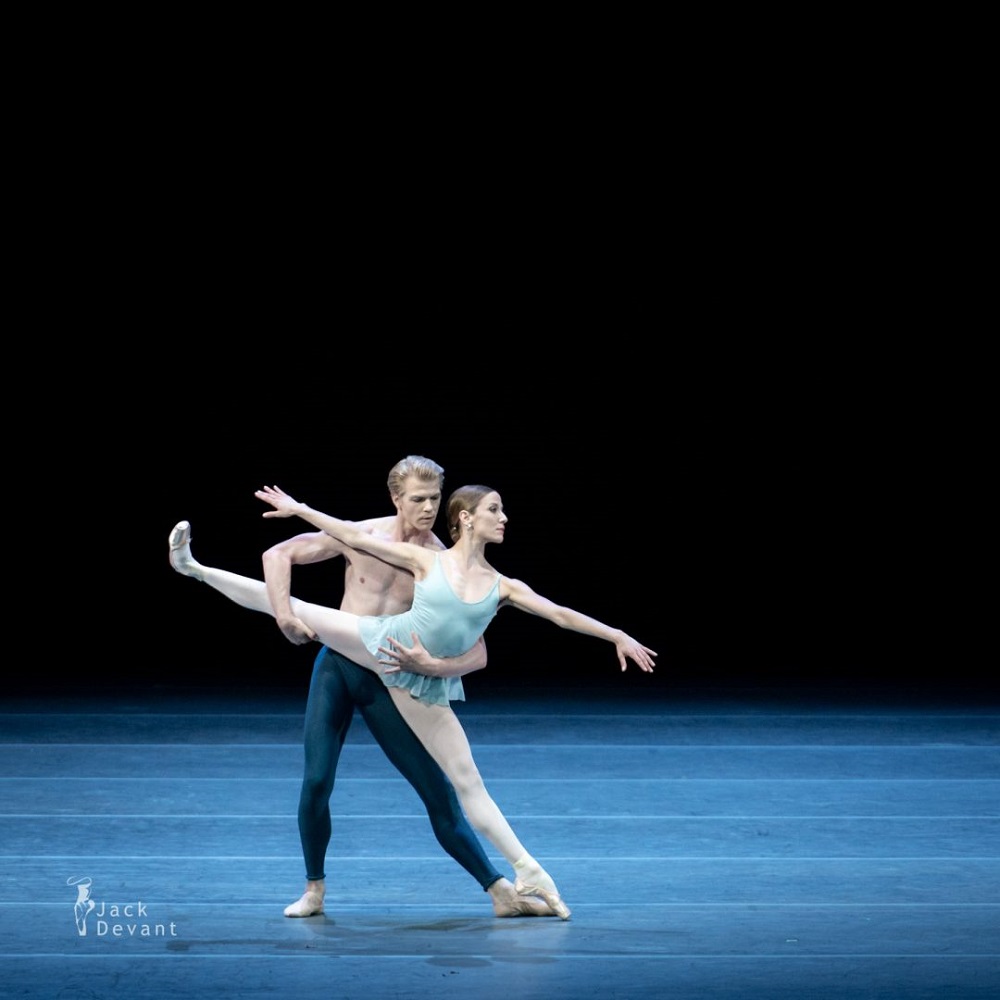
Paris Opera Ballet – Jack Devant and Ludmila Pagliero in “Trois Gnossiennes” created by Hans van Manen – Photo by Marijn Rademaker
Dupont noted that in France, the Hollywood Bowl is viewed as an iconic symbol of Los Angeles, similar to the way Americans think about visiting the Eiffel Tower or Notre Dame cathedral.
The Hollywood Bowl will be the end of the line for the Paris Opera Ballet season with some dancers staying to visit and others returning to start their summer break. The Bowl performances also mark Dupont’s retirement as director. Asked her thoughts on leaving, she expressed her pride at how she and her team prepared for the dancers’ return after the Covid closure. Having been a dancer on the receiving end of artistic practices especially with new choreography, she instituted practices like having auditions for visiting choreographers which opened more opportunities for choreographers to spot and develop dancers. Dupont is also proud of her work with Dudamel to bring Paris Opera Ballet to the Hollywood Bowl and to lay the groundwork for future collaborations. Already the maestro is confirmed to conduct for the Paris Opera Ballet during the 2022-2023 season.
Niles Williams previously headed the Music Center dance series and consulted with LA Phil on prior dance segments. Now in a newly created post of Chief Content and Engagement Officer with the LA Phil, her prediction that more dance performance with the LA Phil is to come is encouraging. The Paris/Los Angeles connections in this Bowl visit will continue to be cultivated with the French consulate in Los Angeles which already is actively involved in bringing French artists her. She also pointed to the two cities’ Olympics connection when a diplomatic compromise on competing bids to host the Olympics resulted in Paris hosting in 2024 and Los Angeles hosting in 2028.
If there is a disappointment in this visit, it is the absence of the company’s fabled corps de ballet which often draws curtain call applause to rival the stars. Hopefully, next time more of the company will come.
Paris Opera Ballet with the LA Phil conducted by Gustavo Dudamel at the Hollywood Bowl, 2301 Highland Ave., Hollywood; Wed.-Thurs., July 20-21, $1.00 – $171.00. https://www.hollywoodbowl.com/
To learn more about the Paris Opera Ballet, please visit their website.
To learn more about the LA Phil, please visit their website.
To learn more about the Hollywood Bowl, please visit their website.
Written by Ann Haskins for LA Dance Chronicle.
Featured image: Grand Pas Classique choreography by Victor Gsovsky – Photo courtesy of Paris Opera Ballet

